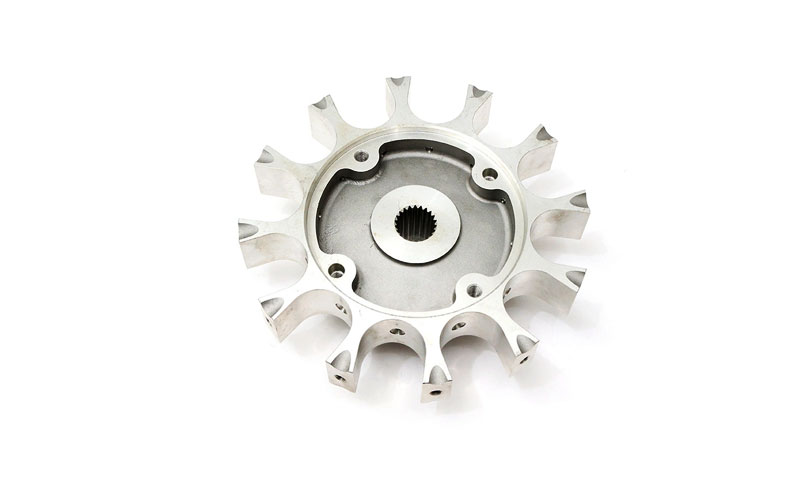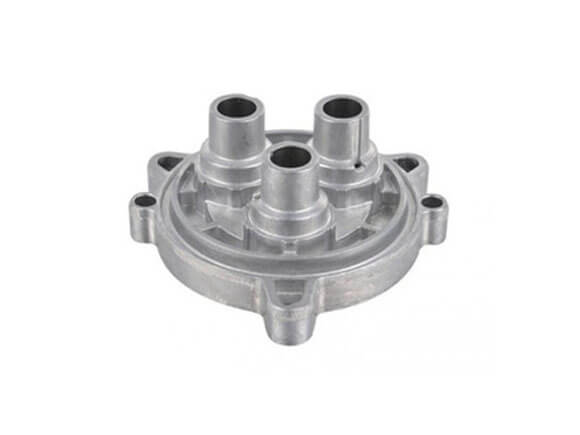Aluminum Casting Explained: Secret Realities and Insights for Industry Professionals
Aluminum casting works as an essential process in contemporary manufacturing, forming parts across different fields. Its diverse methods, such as sand and die casting, provide to various manufacturing demands. The distinct residential or commercial properties of aluminum alloys improve their applicability, yet tests continue to be in maintaining quality and effectiveness. Comprehending these elements is vital for sector professionals. What are the most up to date innovations and ideal practices that can even more enhance this process?
Summary of Aluminum Casting Processes

Crucial element of aluminum casting processes consist of the preparation of mold and mildews, which might be made from sand, metal, or ceramic products, depending upon the intended usage. Furthermore, temperature control is important to ensure proper melting and solidification of aluminum.
The casting procedure permits for complex designs and can attain high levels of dimensional precision. When cooled down, the castings might undergo completing operations such as machining or surface area treatment to satisfy specific efficiency standards. Generally, aluminum casting functions as a flexible production technique, successfully meeting the varied demands of different sectors.
Kinds Of Aluminum Casting Techniques
In the domain of aluminum casting, different techniques are used to attain different results. Sand casting strategies provide versatility and cost-effectiveness for intricate shapes, while die casting processes supply high precision and effectiveness for mass production. Comprehending these approaches is important for choosing the ideal method based upon job requirements.
Sand Casting Techniques
Sand casting methods stand for a basic method in aluminum casting, where sand is utilized as a mold and mildew product to form liquified steel. This procedure involves creating a pattern from the preferred component, which is after that positioned in a sand mixture to form a mold and mildew. The sand is compacted around the pattern, and after elimination, it develops a dental caries in the shape of the part. Molten aluminum is poured into this cavity, permitting it to strengthen and cool down. One substantial advantage of sand casting is its adaptability; it can fit large components and complex shapes. Furthermore, the products utilized are fairly inexpensive, making it an available option for various manufacturing applications in the aluminum industry.
Die Casting Processes
Die casting procedures are a noticeable approach for forming aluminum parts, using high-pressure methods to require molten metal right into specifically crafted molds. This process is specifically preferred for its capability to create complex shapes with limited resistances and a smooth finish. There are two key kinds of die casting: hot chamber and cool chamber. Warm chamber die casting appropriates for metals with reduced melting factors, permitting faster production prices. Alternatively, cold chamber die casting is ideal for greater melting factor metals, calling for a different melting heating system. Both methods boost effectiveness and reduce material waste, making them vital in automotive, aerospace, and customer products industries. Recognizing these processes aids experts select one of the most ideal method for their certain applications.
Material Properties of Aluminum Alloys

Toughness and Durability
Stamina and sturdiness are essential attributes of aluminum alloys that make them suitable for different casting applications. These materials display a positive strength-to-weight proportion, enabling the development of light-weight yet durable parts. With respect to tensile toughness, details aluminum alloys can be crafted to withstand considerable loads without deforming. This residential or commercial property is especially crucial in markets such as aerospace and vehicle, where efficiency and security are critical. Furthermore, aluminum alloys typically maintain their mechanical residential properties under diverse temperature problems, making certain regular efficiency. The innate ductility of these alloys also permits effective shaping throughout the casting procedure, making it much easier to create complex geometries. Overall, the toughness and longevity of aluminum alloys add considerably to their widespread usage in innovative applications.
Corrosion Resistance Characteristics
While aluminum alloys are prized for their toughness and lightweight homes, their corrosion resistance is an additional crucial quality that enhances their viability for various applications. Aluminum normally forms a safety oxide layer when exposed to dampness, which assists to stop additional oxidation. This inherent residential or commercial property makes aluminum alloys especially useful in environments vulnerable to rust, such as industrial and aquatic settings. Additionally, various alloy compositions can affect resistance levels, with specific alloys specifically crafted to enhance this characteristic. Therapies like anodizing can even more improve deterioration resistance by thickening the oxide layer. Comprehending the deterioration resistance of aluminum alloys is important for sector professionals when choosing products for projects requiring sturdiness and longevity in tough atmospheres.
Benefits of Aluminum Casting in Production
Aluminum casting offers various advantages in production, making it a favored option for different industries. One considerable advantage is its light-weight nature, which adds to minimized transport expenses and boosted power performance in output. Aluminum's outstanding thermal and electric conductivity improves performance in applications needing warmth dissipation or electric transmission.
The product's capability to be cast into elaborate shapes enables for design flexibility, decreasing the need for additional machining procedures. Furthermore, aluminum casting shows remarkable rust resistance, causing longer product lifespans and lower upkeep prices.

Common Applications of Aluminum Castings
The convenience of aluminum casting enables its extensive usage throughout various markets. Usual applications include automobile components, where light-weight and corrosion-resistant components, such as engine blocks and transmission housings, enhance automobile efficiency. In the aerospace field, aluminum castings are utilized for structural elements, supplying strength without adding considerable weight.
Furthermore, the electric sector advantages from aluminum spreadings in making enclosures and heat sinks, where thermal conductivity is vital. The customer items field also incorporates aluminum castings in products like pots and pans, furniture, and decorative items, combining looks with functionality.
The building market employs aluminum castings for architectural elements, home window structures, and components, which offer sturdiness and style flexibility. Overall, the varied applications of aluminum spreadings highlight their significance in modern production, adding to improvements in effectiveness and product layout throughout multiple areas.
Technologies and Technical Developments
As industries continue to evolve, technologies in aluminum casting modern technology are transforming manufacturing procedures and product capacities. Improvements in 3D printing and additive manufacturing have actually allowed the creation Precision aluminum casting of intricate geometries that were formerly difficult to achieve with typical techniques. These technologies enable for rapid prototyping, lowering lead times and prices.
Furthermore, renovations in mold layout and materials have actually improved the casting procedure by enhancing performance and decreasing waste. The assimilation of wise production techniques, such as IoT gadgets and real-time data analytics, allows for much better monitoring and optimization of production criteria, resulting in better outcomes.
In addition, advancements in aluminum alloys supply enhanced stamina, deterioration resistance, and light-weight homes, accommodating the growing demands in aerospace and automotive industries. Collectively, these advancements are not just boosting productivity but likewise satisfying the rigorous requirements of contemporary design applications.
Finest Practices for Top Quality Control in Aluminum Casting
Ensuring top quality outcomes in aluminum casting needs adherence to finest methods that include different phases of the production process. Detailed product evaluation is essential to confirm the quality of aluminum alloys used, as contaminations can greatly influence the last item. Implementing precise melting and putting strategies lessens flaws; preserving optimal temperatures prevents oxidation and advertises harmony.
Additionally, mold design plays a crucial duty; making use of computer-aided style (CAD) can enhance precision and decrease human error. Regular surveillance of the cooling process is crucial to stay clear of warping and contraction. Furthermore, utilizing non-destructive screening methods, such as ultrasonic or X-ray examinations, assists recognize interior flaws without damaging the components.
Lastly, establishing a comments loophole with designers and operators promotes continual enhancement, ensuring that high quality control measures develop alongside technical advancements. By complying with these best techniques, makers can boost the dependability and efficiency of aluminum spreadings.
Frequently Asked Questions
What Are the Environmental Influences of Aluminum Casting?
The ecological impacts of aluminum casting include substantial energy consumption, greenhouse gas exhausts, and potential water contamination from factory procedures. In addition, bauxite mining for aluminum ore can lead to habitat destruction and soil deterioration.
Exactly How Does Aluminum Casting Contrast to Various Other Steel Casting Procedures?
Aluminum casting generally provides advantages in lightweight elements and rust resistance contrasted to various other procedures, such as iron or steel casting, which may supply higher stamina however lead to much heavier and less corrosion-resistant products. - Aluminum Foundry
What Are Common Defects in Aluminum Castings and Their Causes?
Usual issues in aluminum spreadings consist of porosity, shrinking, and additions. Causes typically come from inappropriate putting strategies, insufficient mold design, or contamination of the molten steel, influencing the end product's integrity and performance.
What Safety and security Preventative Measures Should Be Taken Throughout Aluminum Casting?
During aluminum casting, essential security precautions include putting on safety gear, ensuring correct air flow, preserving a clean work space, taking care of liquified steel with treatment, and following recognized procedures to minimize threats of burns, breathing risks, and crashes.
Exactly How Can I Improve the Efficiency of My Aluminum Casting Operations?
To enhance efficiency in aluminum casting procedures, one must optimize mold and mildew design, simplify material handling, use automated procedures, conduct routine maintenance on equipment, and buy employee training to boost skills and performance.
Various approaches exist, aluminum casting encompasses numerous primary procedures that cater to various applications and needs. Secret components of aluminum casting processes consist of the preparation of molds, which might be made from sand, metal, or ceramic products, depending on the intended use. Sand casting strategies represent a basic method in aluminum casting, where sand is made use of as a mold material to form liquified metal. As markets proceed to develop, technologies in aluminum casting innovation are changing manufacturing processes and product capacities. Ensuring top notch outputs in aluminum casting requires adherence to finest techniques that encompass different phases of the manufacturing procedure.